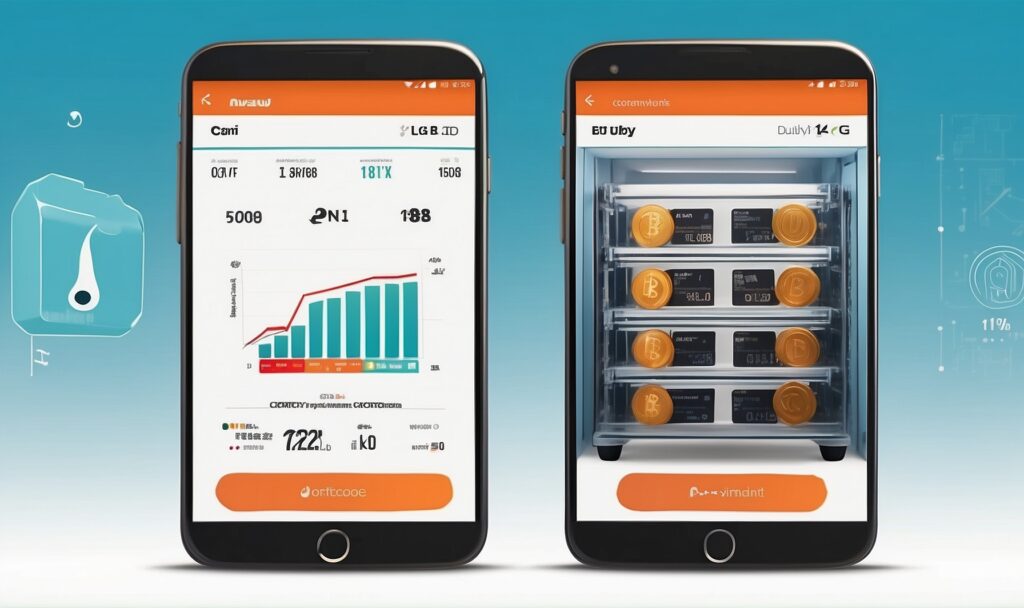Introduction
The significance of digital asset security is paramount in the constantly evolving cryptocurrencies landscape. As the popularity of cryptocurrencies like Bitcoin, Ethereum, and others continues to grow, so does the need for robust storage solutions. Two primary types of cryptocurrency wallets have emerged as the frontrunners in the ongoing quest for secure storage: hot and cold storage. In this comprehensive guide, we’ll delve into the nuances of each, exploring their strengths, weaknesses, and the factors to consider when choosing the most suitable wallet for your needs.
I. Understanding Cryptocurrency Wallets
Before diving into the hot vs. cold storage debate, let’s first establish a fundamental understanding of cryptocurrency wallets. At its core, a cryptocurrency wallet is a digital tool that allows users to store, send, and receive their digital assets.
II. Hot Wallets: The Convenience of Accessibility
Hot wallets are internet-connected cryptocurrency wallets that enable users to conveniently access their funds. These wallets come in various forms, including online wallets, desktop wallets, and mobile wallets.
1. Online Wallets: The Web of Convenience
Online wallets are stored on cloud servers, enabling users to access their funds from any device with an internet connection. Popular online wallets include those provided by cryptocurrency exchanges, making it easy for users to trade on the platform.
2. Desktop Wallets: Balancing Accessibility and Security
Desktop wallets are applications installed on a user’s computer, offering a balance between accessibility and security. By storing private keys locally, users have more control over their assets compared to online wallets.
3. Mobile Wallets: Cryptocurrency on the Go
Mobile wallets bring the world of cryptocurrencies to users’ fingertips, allowing them to manage their funds on smartphones. While convenient, mobile wallets face similar security challenges as desktop wallets, including the risk of loss or theft of the device.
III. Cold Storage: Fortifying Security Through Isolation
Cold storage, on the other hand, takes a different approach by keeping private keys entirely offline. This isolation from internet connectivity provides an additional layer of security, making cold storage an attractive option for those prioritizing the safety of their cryptocurrency holdings over constant accessibility.
1. Hardware Wallets: Tangible Security
Hardware wallets are physical devices designed to store cryptocurrency private keys offline, resembling USB drives. They are secure and unauthorized access-resistant, making them a top choice for protecting private keys from online threats.
2. Paper Wallets: Old School Security
Paper wallets involve printing or manually recording the cryptocurrency public and private keys on paper. While seemingly low-tech, paper wallets are immune to online hacking attempts. However, they come with their own set of challenges, such as the risk of physical damage, loss, or deterioration over time.
IV. Comparing Hot and Cold Storage: A Balancing Act
The choice between hot and cold storage ultimately comes down to individual preferences, risk tolerance, and the intended use of the cryptocurrency holdings. Let’s compare these two storage methods across various key factors:
1. Security: The Top Priority
- Hot Wallets: Vulnerable to online attacks and hacking attempts. Security measures like two-factor authentication (2FA) and encryption can mitigate risks but may not provide the same level of protection as cold storage.
- Cold Storage: Offers a higher level of security by keeping private keys offline, making it impervious to online threats. Hardware wallets, in particular, are renowned for their robust security features.
2. Accessibility: The Need for Speed
- Hot Wallets: Quick and easy access to funds, making them suitable for frequent transactions and trading. However, this accessibility comes with a trade-off in terms of security.
- Cold Storage: Inherently less accessible due to the offline nature of private keys. While this can be seen as a drawback for those who require instant access, it provides a safeguard against the rapid, unauthorized movement of funds.
3. Convenience: Balancing Act
- Hot Wallets: User-friendly interfaces and seamless integration with online platforms make hot wallets convenient for everyday use. However, this convenience may expose users to potential risks.
- Cold Storage: Typically involves additional steps for transactions, such as connecting hardware wallets to a computer. While this adds a layer of complexity, it contributes to the heightened security of cold storage solutions.
4. Cost: Investing in Security
- Hot Wallets: Often free to use, with some exceptions for premium features or services. Users should be aware of potential hidden costs, such as transaction fees on exchange-based wallets.
- Cold Storage: While hardware wallets may involve an initial purchase cost, the investment is justified by the enhanced security they provide. Paper wallets, on the other hand, incur minimal costs but require careful handling to prevent physical damage.
If you have any question about this article, please contact us …
You can easily create a free cryptocurrency wallet with Binance.
V. Conclusion: Finding the Right Balance
In the dynamic world of cryptocurrencies, the choice between hot and cold storage is not a one-size-fits-all decision. It’s crucial for users to assess their priorities, risk tolerance, and usage patterns to determine the most suitable storage solution for their needs.
For those prioritizing accessibility and frequent transactions, hot wallets offer a user-friendly experience, albeit with a potential compromise in security. On the other hand, users placing a premium on the safety of their digital assets may opt for the offline security provided by cold storage solutions, especially hardware wallets.
As the cryptocurrency landscape continues to evolve, so too will the options for secure storage. Staying informed about the latest developments in wallet technology and adopting best practices for security are essential steps in safeguarding your digital assets in this decentralized financial frontier.

